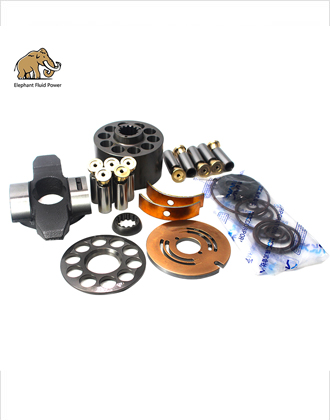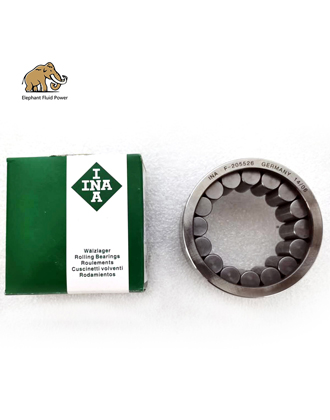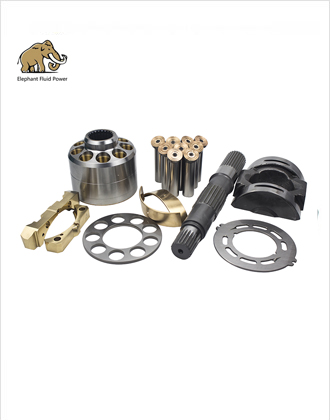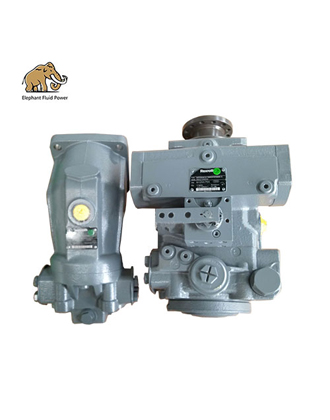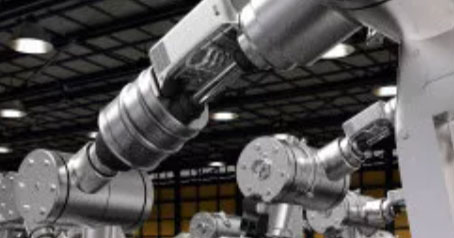1. Fault type
The frequent failures of marine hydraulic equipment include: action failure; pressure failure; noise and vibration; oil temperature is too high; oil pollution and so on. There are various reasons for the failure of marine hydraulic equipment. Failure to meet the specification requirements during design or installation, normal wear and tear of the equipment for long-term use, and improper operation of human factors may cause hydraulic equipment or hydraulic system failures.
2. Failure characteristics
1) Diversity and complexity of faults. Several faults are often intertwined. Some are caused by the failure of one hydraulic component, some are affected by the comprehensive factors of multiple hydraulic spare parts in the system, and some are caused by the simultaneous failure of hydraulic and electrical components.
2) Even if the ship hydraulic equipment has the same fault, the cause is different. In particular, the current ship hydraulic equipment is a common combination of mechanical, hydraulic, electrical and even microcomputers, and the causes of failures are more diverse. Even if it is the same reason, it may cause different failures.
3 Failure analysis and elimination of hydraulic equipment
Since hydraulic equipment failure has the above characteristics compared with other equipment failures, the method of dealing with hydraulic equipment failure and the method of dealing with other equipment failures have their own characteristics in addition to certain commonalities. To deal with hydraulic equipment failure, it is necessary to analyze the factors that cause the failure one by one. However, various components, auxiliary mechanisms and oil are mostly enclosed in the housing and pipeline, unlike mechanical transmission, which is directly observed from the outside, and the measurement is also It is not as convenient as the electrical system, and the hydraulic components are all working under sufficient lubrication conditions, and the system is equipped with overload protection devices, so there is little damage to parts. Therefore, when a hydraulic equipment fails, it often takes more time to find the cause, and it is more troublesome to troubleshoot. -In general, any failure will be accompanied by various abnormal phenomena before it evolves into a major failure. If the system has abnormal sound; the speed of the actuator decreases, the action is weak or does not work; the oil level drops; the oil deteriorates; the leakage increases; the oil temperature is too high; the burnt smell appears. The above-mentioned fault phenomena can be found through basic methods such as seeing, hearing, touching, sniffing and so on. Only by fully understanding the fault situation and carefully and scientifically analyzing the internal laws of the fault can we find out the real cause of the fault and deal with it reasonably. Next, the author will talk about the analysis and treatment methods of a few cases of failure based on the practice of working on the ship.
3.1Action failure
The speed of the traveling components is too slow or the operation instructions are not executed. This is the failure of the hydraulic device of the cabin cover that has more failures in the daily maintenance and management. The initial stage of the fault is the gradual decrease in speed during work until it fails to work normally. The result of the inspection found that the hydraulic gear pump I used in the system had been working for too long, and the oil temperature continued to rise with the extension of time during work; there were black debris on the inlet filter of the pump. After removing the black debris, the test found that although the speed increased slightly, it still could not meet the requirements of normal use, and the system oil temperature continued to rise. When it rises to 60~70°C, the opening and closing of the hatch will no longer act. The dismantling of the gear pump found that the gear pump was very severely worn, and the axial and radial clearances were much beyond the permitted range. After replacing the new gear pump, the equipment and system returned to normal. It can be seen that the failure is caused by the low volumetric efficiency of the pump after severe wear. At the beginning of work, the oil temperature is low, and the oil in the system has a high degree of stiffness, and it can work according to the design requirements. When the working time is long, the oil temperature is high, the stiffness decreases, and the internal leakage of the pump increases, causing the pump to work abnormally.
3.2Noise and vibration
The causes of noise and vibration failures are very complex. Not only the mechanical equipment and electrical appliances of the system can cause noise and vibration, but also within the hydraulic system, almost every link can cause noise and vibration. Air mixing in the system; mechanical vibration; failures of components such as hydraulic pumps, hydraulic motor and control valves; pressure and flow pulsations in the system, and the resulting resonances, are all causes of noise and vibration. It is very difficult to analyze and deal with this kind of fault. It is necessary to make a preliminary judgment based on the characteristics of the fault, which type of cause is caused, and then through oiling, sniffing, inspection, and even disintegration inspection, find the cause of the fault and eliminate it.
ELEPHANT FLUID POWER mainly focuses on Hydraulic parts, such as hydraulic pump, Hydraulic motor, Hydraulic valve. Service areas are heavy equipment and construction machinery, including the Mining machines, Earth Moving, Construction Vehicles…
 French
French
 Portuguese
Portuguese
 Russian
Russian
 German
German
 Spanish
Spanish
 Japanese
Japanese
 Korean
Korean
 Irish
Irish
 Greek
Greek
 Turkish
Turkish
 Italian
Italian
 Danish
Danish
 Romanian
Romanian
 Indonesian
Indonesian
 Czech
Czech
 Afrikaans
Afrikaans
 Swedish
Swedish
 Polish
Polish
 Basque
Basque
 Catalan
Catalan
 Esperanto
Esperanto
 Hindi
Hindi
 Lao
Lao
 Albanian
Albanian
 Amharic
Amharic
 Armenian
Armenian
 Azerbaijani
Azerbaijani
 Belarusian
Belarusian
 Bengali
Bengali
 Bosnian
Bosnian
 Bulgarian
Bulgarian
 Cebuano
Cebuano
 Chichewa
Chichewa
 Corsican
Corsican
 Croatian
Croatian
 Dutch
Dutch
 Estonian
Estonian
 Filipino
Filipino
 Finnish
Finnish
 Frisian
Frisian
 Galician
Galician
 Georgian
Georgian
 Gujarati
Gujarati
 Haitian
Haitian
 Hausa
Hausa
 Hawaiian
Hawaiian
 Hebrew
Hebrew
 Hmong
Hmong
 Hungarian
Hungarian
 Icelandic
Icelandic
 Igbo
Igbo
 Javanese
Javanese
 Kannada
Kannada
 Kazakh
Kazakh
 Khmer
Khmer
 Kurdish
Kurdish
 Kyrgyz
Kyrgyz
 Latin
Latin
 Latvian
Latvian
 Lithuanian
Lithuanian
 Luxembourg
Luxembourg
 Macedoniar
Macedoniar
 Malagasy
Malagasy
 Malay
Malay
 Malayalam
Malayalam
 Maltese
Maltese
 Maori
Maori
 Marathi
Marathi
 Mongolian
Mongolian
 Burmese
Burmese
 Nepali
Nepali
 Norwegian
Norwegian
 Pashto
Pashto
 Persian
Persian
 Punjabi
Punjabi
 Serbian
Serbian
 Sesotho
Sesotho
 Sinhala
Sinhala
 Slovak
Slovak
 Slovenian
Slovenian
 Somali
Somali
 Samoan
Samoan
 Scots Gaelic
Scots Gaelic
 Shona
Shona
 Sindhi
Sindhi
 Sundanese
Sundanese
 Swahili
Swahili
 Tajik
Tajik
 Tamil
Tamil
 Telugu
Telugu
 Thai
Thai
 Ukrainian
Ukrainian
 Urdu
Urdu
 Uzbek
Uzbek
 Vietnamese
Vietnamese
 Welsh
Welsh
 Xhosa
Xhosa
 Yiddish
Yiddish
 Yoruba
Yoruba
 Zulu
Zulu

